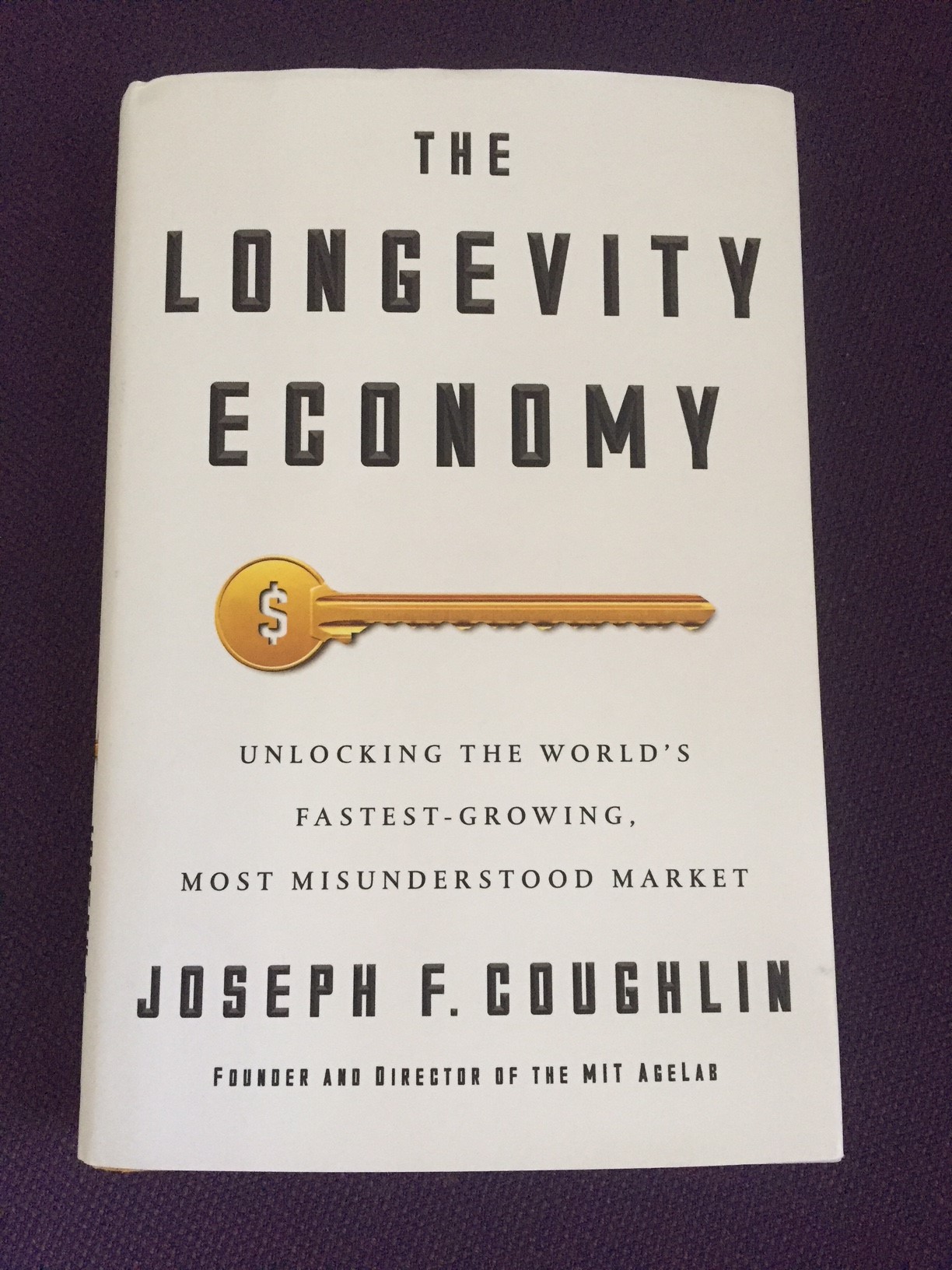Calling all entrepreneurs.
Want to know an untapped Blue Ocean opportunity?
There is a huge group of people out there — a population with tremendous wealth and purchasing power — whose needs are not being met.
This represents a massive, largely unexplored, business opportunity for anyone who is willing to understand the group’s desires and build products and services around them.
This poorly-served population is older adults — specifically people over 50 years of age. The 50+ crowd holds the keys to the emerging longevity economy.
Consider these stats from the eye-opening book The Longevity Economy by Joseph F. Coughlin:
- 50+ consumers control 83% of household wealth and are worth about $8 trillion in the United States alone
- Less than 15% of companies have established any sort of business strategy focused on older adults
- Less than 10% of marketing dollars are aimed at the 50+ population
- Advertisers spend 500% more on millennials than all other age groups combined
Do you want to fight with every other company to win the 18–34 crowd — a group with minimal free time and disposable income — or do you want to meet the needs of the most affluent population (in terms of both time and money)?
If you want to capitalize on the longevity economy, you need to really understand its people, and why they are not currently being served properly.
Most businesses targeting older adults focus only on a small number of basic needs — specifically health, safety, and finances. Yes, there are many health care, pharmaceutical, and financial companies servicing older adults, but the 50+ population wants much more than just to protect their money and stay alive.
Don’t just take my word for it.
Joseph Coughlin is arguably the world’s leading expert on the older population. He is the founder and director of the MIT AgeLab, a multidisciplinary research program created to understand the behavior of the 50+ population, the role of technology and design in their lives, and the opportunity for innovation to improve the quality of life for older adults and their families.
Coughlin asserts that the 50+ crowd desires much more than just health and safety. In fact, only 35% of people over 75 report feeling “old.”
What they really want is to chase their dreams, have fun, contribute, socialize, achieve meaning, and leave a legacy.
In short, older adults want to have a life, not just stay alive.
Unfortunately their higher-level desires are not being satisfied. Many older adults find themselves retired and socially isolated. Coughlin says that “potential routes to happiness and meaning, including work, professional ambition, climbing the social ladder, education, athletic achievement, leaving a legacy — even sex — are closed off.”
So how can you best target this important population?
First, you need to understand that 50+ adults are comfortable with technology. They have used computers and cell phones for much of their adult life, and understand the benefit technology provides. As Coughlin says, “Tomorrow’s most successful products for the older consumer will feature high technology or else will embrace a consumer for whom tech is an important part of life.”
Additionally, not all older consumers are of equal importance for businesses. Coughlin is confident that women hold the most power in the longevity economy. Women outnumber men, they are leading the charge for a more fulfilled older life, and women control the overwhelming majority of purchasing decisions among the older population. In fact, women influence 64% of consumer purchases worldwide among all age groups! Coughlin says it well: “The future will be grey, female, and proud of it.”
And don’t think that your offering needs to be a material thing. Many older adults have accumulated wealth and material possessions over the years, but they seeking something else as they age. According to Coughlin, this group “simply must have meaning in their lives — and will pay for products that deliver it. This drive — and the closely related desire to leave behind a positive legacy — constitutes perhaps the single greatest unexplored area on the frontier of the longevity economy.”
One way to provide meaning for older adults is through work and mentorship. If you want to be successful in the longevity economy, you should recognize that older adults still want to be productive — using their experience and resources to give back. “Of all the aspirations that older adults will tackle head-on in the near future, the one that will affect all business sectors, not just older-consumer-facing companies, is the widespread desire for meaningful work in one’s ‘retirement years',” says Coughlin.
And of course don’t forget that older adults still want to laugh and enjoy time with their friends and family. They want to double-down on time spent with loved ones. If you can facilitate meaningful experiences and human connection, you will be well-positioned in the longevity economy.
To sum it all up: Embrace technology, focus on women, and deliver socialization, meaning, and an enhanced legacy.
If you do that, you will be creating a better tomorrow for older adults and changing the narrative of old age. And you won’t only be improving their lives.
As Coughlin says, “The legacy you create may well be your own.”


